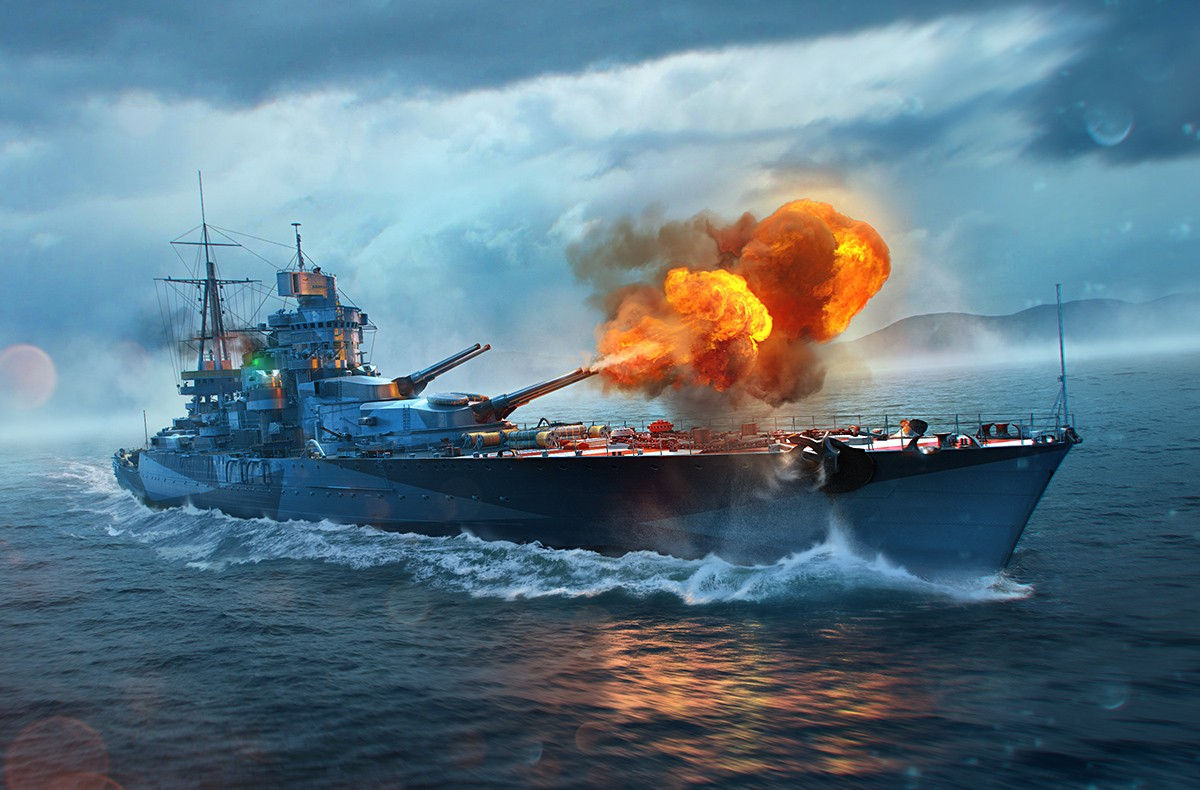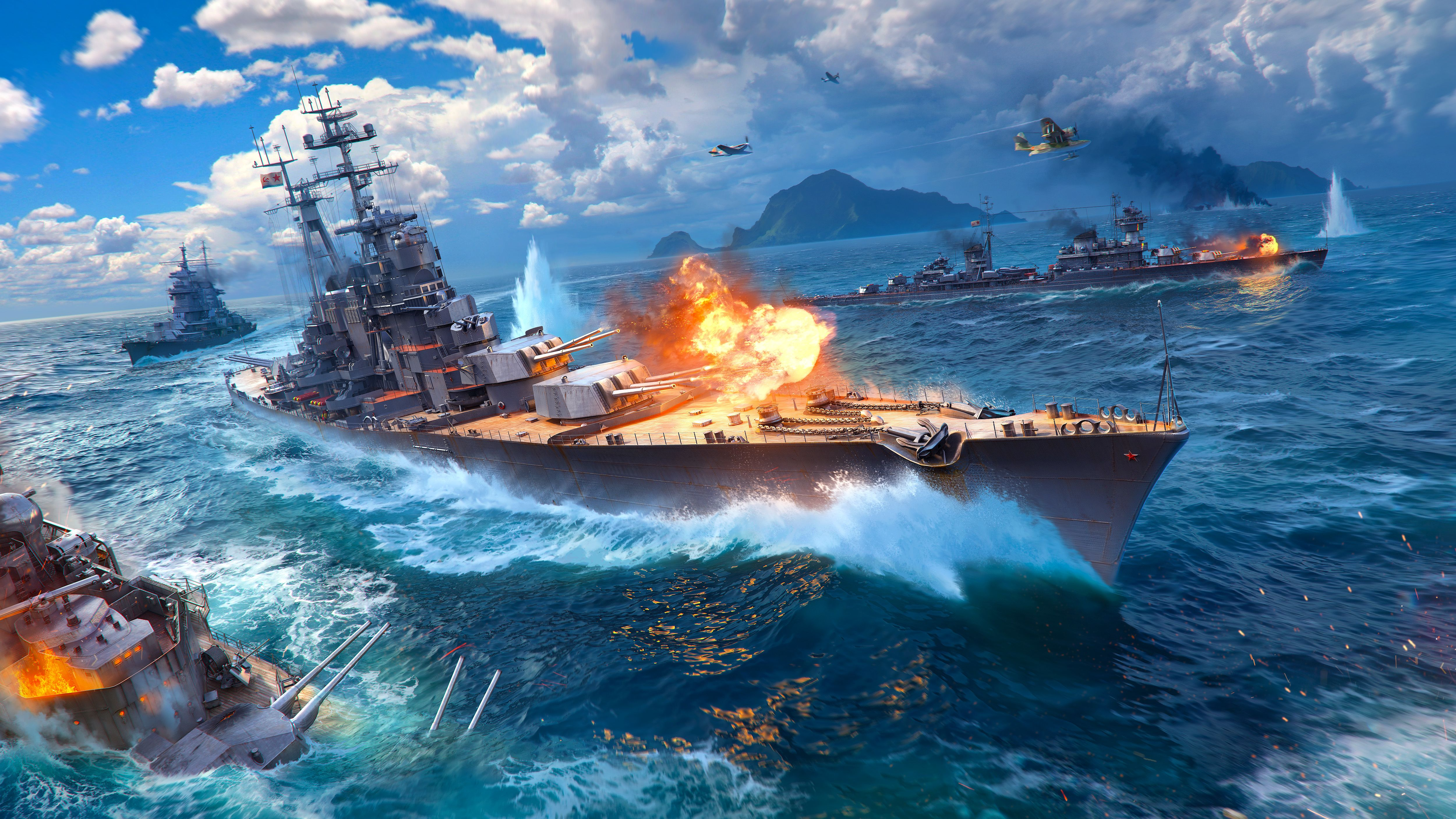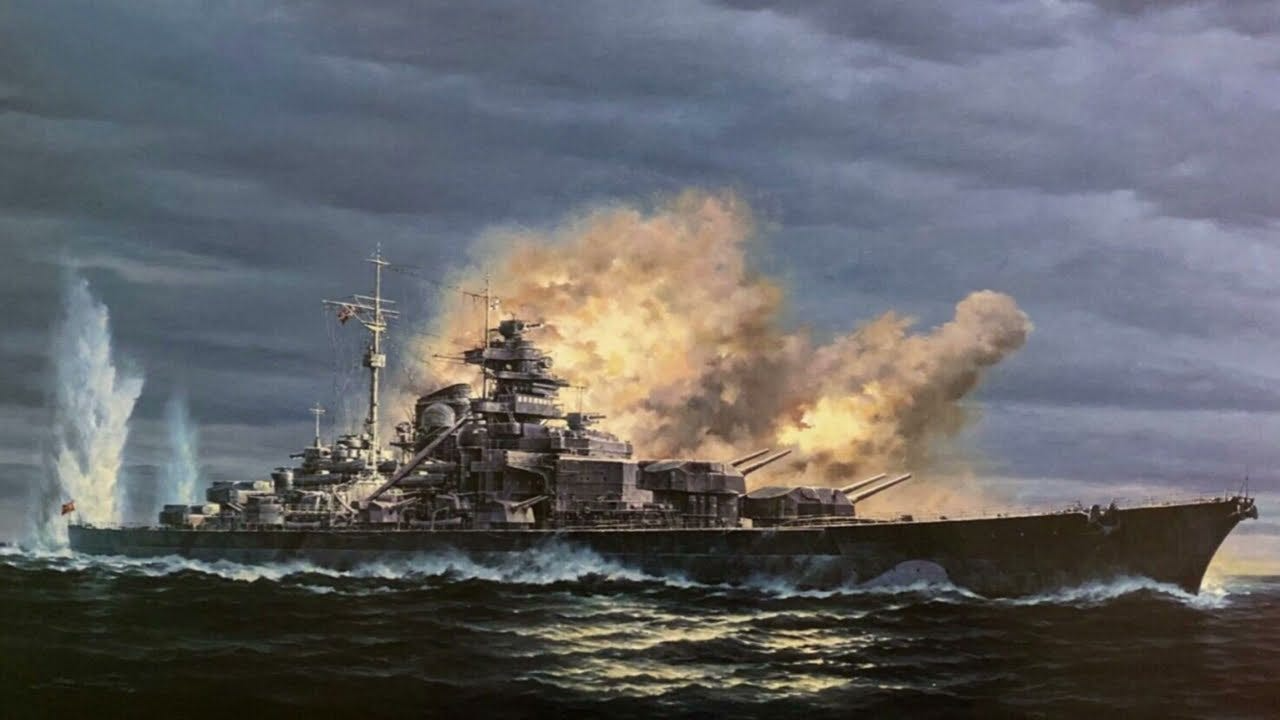From the late 19th century to the post-World War II era, when naval aircraft and anti-ship missiles were not yet widespread, battleships were the dominant type of warship on the oceans, showcasing the power of nations at sea. Battleships are large steel-armored warships, larger than cruisers and destroyers, equipped with multiple heavy-caliber guns.

The Bismarck was the largest battleship ever built by the Nazis and was considered the most powerful warship in Europe during World War II. The ship had a displacement of 50,000 tons, was 36 meters wide, 251 meters long, and manned by over 2,200 crew members. The Bismarck was armed with 8 380mm guns along with 56 smaller guns, and its hull was protected by a 32cm thick armor to withstand enemy gunfire. With a maximum speed of 30 knots, the Bismarck was one of the fastest battleships at the time.

According to We Are The Mighty, the German Navy did not have enough manpower to confront the large British fleet of battleships, but their strategy of attacking the commercial shipping routes to England using submarines, fast raiders, and German light cruisers proved effective. A fast and powerful ship like the Bismarck could cause serious damage, threatening the supply lines to England.

The Bismarck was launched on February 14, 1939, and was personally christened by Nazi dictator Adolf Hitler. Trials showed that the Bismarck was fast and well-equipped, but its maneuverability was limited due to its rudder design flaw, which led to disastrous consequences later on.

Germany’s plan was for the Bismarck to join forces with the battleship Tirpitz and two light battleships Scharnhorst and Gneisenau to form a fast strike group, overwhelming in firepower and faster than anything they couldn’t outrun or outgun. This group could cut off the maritime supply lines to England across the North Atlantic.

However, this plan failed as the construction of the Tirpitz was delayed, the Scharnhorst was hit by a torpedo and bombed in port, and the Gneisenau also needed repairs. Eventually, the Bismarck set sail with the heavy cruiser Prinz Eugen, along with several destroyers and minesweepers on May 19, 1941, in a mission called Operation Rheinübung.
The British received intelligence on the Bismarck through neutral parties like the Swedish Navy. After docking in Norway, the Bismarck and Prinz Eugen headed north into the North Atlantic and intercepted convoys of merchant ships traveling from North America to England.

The British navy pursued these ships, and in the Denmark Strait, the German ships encountered the British battleship Hood and the battleship Prince of Wales. After a gun duel, a shell from the Bismarck hit the Hood’s main magazine, causing the ship to explode and sink. Only three out of 1,419 crew members survived. The bridge of the Prince of Wales was also hit, killing almost all of the command staff, leaving only the captain and another senior officer alive, forcing the ship to retreat.
Although two powerful warships were defeated, the British navy was surprised, but the Bismarck also suffered damage. Shells from the Prince of Wales punctured a large hole in the ship’s fuel tanks, causing the fuel to mix with seawater and rendering it unusable.
The Bismarck was forced to sail to a port in France for repairs with the support of the Prinz Eugen. Upon receiving this information, the British mobilized all their ships in the area along with fighter planes to chase the Bismarck.
Despite being damaged, the Bismarck was still faster than any British battleship, and in the end, the British had to resort to launching torpedoes from the aircraft carrier Ark Royal to sink it. A torpedo hit the stern of the Bismarck, jamming its rudder, causing it to circle aimlessly while a group of British ships closed in. Admiral Günther Lütjens, the commanding officer of the Bismarck, sent a radio message to headquarters saying they would fight to the last shell.

Because the ship couldn’t maneuver to aim accurately, most of the big guns on the Bismarck were useless. The British ships continued to fire, ruthlessly attacking the Bismarck, causing Lütjens and most of the German officers on board to perish. After the Bismarck was crippled, the senior officer ordered the crew to activate the scuttling charges to sink the ship, but the communication equipment was damaged, leaving most of the crew unaware of the order. In the end, the ship capsized and sank, with 114 crew members out of over 2,200 surviving.
The wreck of the Bismarck was discovered on June 8, 1989, by Dr. Robert Ballard, the oceanographer who found the Titanic.
